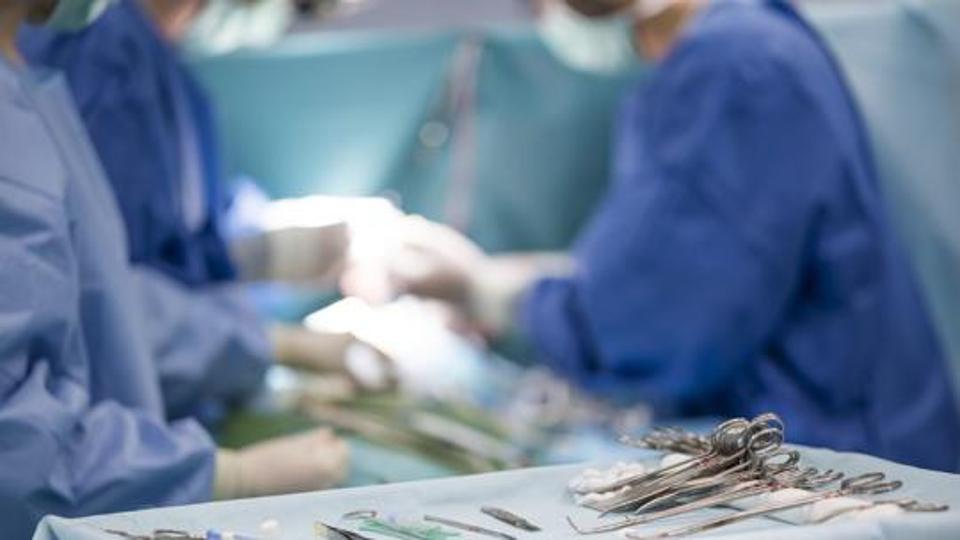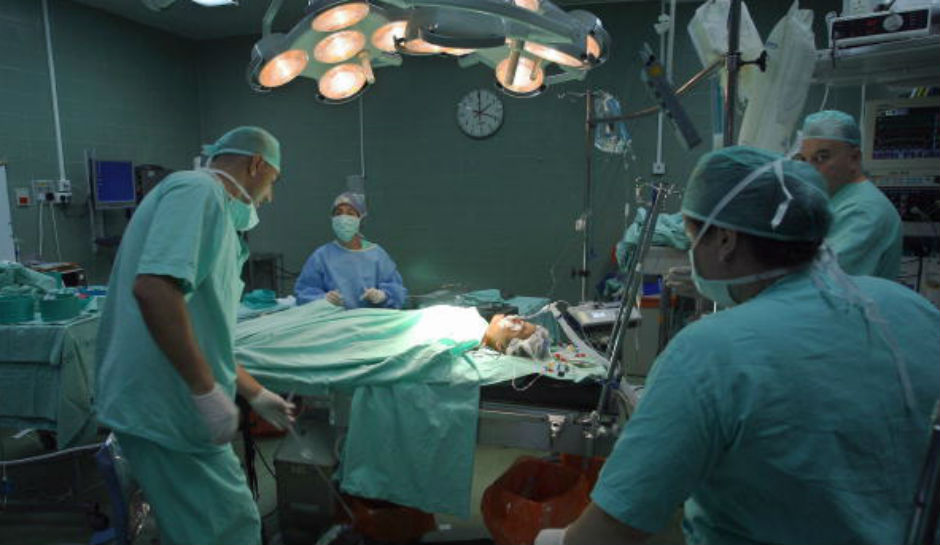The reproductive organ of women must be removed in the presence of serious diseases, especially if they pose a threat to life. In some cases, surgery on the uterus is required. There are several different options for surgical intervention, when the uterus and appendages are only partially removed - hysterectomy. In some cases, it is impossible to do without a complete removal of the organ - extirpation.
Indications for removal

Performing surgery on the uterus does not always mean full body elimination. In some cases, doctors leave the cervix and its tubes intact, sometimes the ovaries. The uterus is removed if a woman has found cancer, severe bleeding, and septic processes began to develop actively in the small pelvis. The main indications for surgery on the uterus may include the following items.
Fibroids, fibroids, uterine leiomyoma
In the presence of such pathologies, a benign mass appears in the muscle of the reproductive organ. Most often, this occurs in women whose age has crossed the borders of 45 years. In the case of younger women, specialists are doing everything possible to save the uterus and reproductive capabilities. It is completely necessary to remove the uterus in the presence of fibroids and similar disorders, if there are the following indicators:
- There was a lesion of the cervix.
- Due to the education of women is constantly feels the pain in the pelvic area.
- Too high risk of developing oncology.
- Symptoms of necrosis are present, occur if there is a torsion of the legs of the fibroids.
- Prolapse of the uterus.
- If the prolapse of the walls of the uterus has occurred, surgery is also necessary.
- A tumor that progresses rapidly, especially if menopause has already begun.
- Fibromyoma is large - exceeds the mark of 6 cm.
A disease such as uterine fibroids without surgery can lead to serious consequences, even death.
Endometriosis
Pathology is very common and involves a chronic form of ectopic spread of glandular tissue. In such a situation, laparoscopy of an unnecessary layer of the epithelium is most often used to preserve reproductive organs. If the disease develops too aggressively, and there is a risk of the appearance of malignant tumors, then in this case, the operation on the uterus represents a complete removal of this organ.
Cancers on the cervix or ovaries
If the operation on the uterus and its appendages is carried out in time, then a woman's life can be saved. As an additional treatment may be assigned to chemotherapy or radiotherapy. Cancers are an excuse to remove the uterus, cervix, tubes, ovaries, lymph nodes located in this area, and in some cases, the upper part of the vagina is excised. In the first stages, only the greater part of the cervix is removed, while the remaining organs are left intact. Thanks to this, a woman after successful completion of treatment can still give birth to a child.

Necrosis of fibrotic nodes
This is a very serious complication of uterine fibroids, which occurs due to insufficient or complete lack of nutrition of fibromatous cells. As a result, there are strong painful sensations, swelling. If the doctor begins to palpate the affected area, then the pain intensifies several times, can cause the patient to have an attack of nausea or vomiting, the body temperature rises sharply, and irritation occurs in the peritoneum. If an infection gets into the supplement, then the pains become so strong that they are difficult to endure.
The type of operation in this case is selected individually. The choice will be influenced by the woman's age, symptoms and general condition of the patient.
Uterine prolapse or prolapse
The main reason for this phenomenon is too weak muscles in the peritoneum and pelvis. Also, the inflammatory process, disturbances in the endocrine system, a large number of births, hard physical work can provoke pathology.
If at the initial stage of treatment there are no positive changes, then a hysterectomy is necessary. In such a situation, they can remove the uterus and vagina or leave part of the vagina so that in the future a woman can have sexual contact.
The extent to which the operation to remove the uterus and its appendages will be appropriate can only be determined by the attending physician. To date, methods for treating uterine prolapse without surgery are known.
Hysterectomy preparation
Removal of the uterus and its appendages is a very serious surgical intervention in which anesthesia is used. Therefore, the procedure must be carefully prepared in advance. Initially, the doctor should familiarize himself with the patient’s medical history in order to determine the presence of diseases of a chronic, infectious or allergic type. It is also worth to determine whether in a particular case to do anesthesia. Complete preparation for a hysterectomy consists of several important steps that must be completed.

Full examination of the patient
First you need to fully examine a woman. To do this, the following procedures are carried out:
- Gynecologist examining the uterus and vagina.
- The level of hormones, glucose, and minerals is measured.
- It is necessary to take a blood test for the presence of sexually transmitted diseases, hepatitis of infectious origin, HIV.
- The blood type and Rh factor are established.
- A woman is being tested for blood coagulability.
- Procedures such as radiography, pelvic ultrasound, ECG, MRI, histology, spirography, tonometry, biopsy are done.
- A woman is checked for the presence of genitourinary infections.
- A thorough diagnosis of the renal, nervous, respiratory, cardiovascular systems is carried out.
Need to prepare the intestines
To do this, the following manipulations are performed:
- For three days, a special diet is followed. All foods containing fiber are eliminated from the diet.
- You can not eat bread, legumes, vegetables or fruit products.
- You can not eat in the evening before surgery for about 8-10 hours.
- It is necessary to clean the intestine immediately before surgery via enema.
Medical preparation
Treatment with antibacterial agents will be needed in the presence of the following diseases:
- Endocrine disorders - diabetes.
- Viral infections, such as the common cold.
- Neurological abnormalities.
- Pathology of the renal, respiratory, cardiovascular system.
- Varicose veins or a chronic form of thrombophlebitis.

Need to prepare veins
Before a hysterectomy, this procedure is considered very important. Immediately after surgery, pressure increases several times in the veins, which leads to stagnation of blood. This can provoke various complications, including a blood clot. To make the veins more elastic, elastic bandages are used during surgery. It is also worth consulting a phlebologist and a vascular surgeon.
Psychologist's help
Removal of the uterus or appendages, even partial, is an incredibly strong psychological stress for a woman, especially at a young age. The specialist should tell you why surgery is necessary and how the process will proceed. Many are interested in what is possible after an operation to remove the uterus. Therefore, it is important to explain to the woman that the elimination of the reproductive system will not affect sexual desire and further intimate life.

How is surgery performed and its duration?
The first doctor determines how much of the uterus to be removed. After this, anesthesia is done, the volume of which will be affected by such indicators as:
- Woman's weight.
- Age.
- General state of health.
- The duration of the surgical process.
General anesthesia is done for absolutely all patients, regardless of the type of operation selected. Due to the anesthetic completely relax all the muscles of the abdominal cavity.
To date, there are several types of hysterectomy:
- Cavity. An incision of 10-15 cm is made in the lower abdomen. It can be horizontal or vertical. This will allow access to the uterus. In addition, this allows you to very well consider the state of tissues, organs. A similar option is used in the presence of an enlarged reproductive organ, large adhesions, polyps, oncology, or with endometriosis. The disadvantages include a long recovery period and a fairly noticeable scar.
- Laparoscopic Such an operation is considered sparing. When it does not make an incision. A special tube is introduced into the abdominal cavity, from which gas flows to raise the walls of the abdominal cavity. When access to the uterus is obtained, tubes with cameras are inserted into the punctures made. The advantage of laparoscopy is a quick recovery period and invisible scars.
- Vaginal. The operation is carried out in the most convenient way. After her scars do not remain. and in her process there is no need to stitch. After vaginal removal of the uterus, a woman quickly recovers both physically and psychologically.
Despite the huge number of advantages of vaginal surgery, such a procedure has a lot of contraindications. These include:
- The uterus is large.
- A malignant tumor is present.
- There are inflammatory processes.
- A woman had a cesarean section.
- There are diseases of a combined orientation.
The duration of the operation is slightly different depending on the type. Cavitary removal of the uterus takes 0.5-2 hours. It all depends on the complexity of the operation. Laparoscopic removal of the reproductive organ takes 1.5-3 hours. Vaginal surgery lasts 2 hours, provided that there are no complications.
Recovery period
There are two stages of the recovery period after surgery on the uterus: early and late. After abdominal surgery, the early recovery period lasts an average of 9-12 days. At the end of the rehabilitation, the sutures are removed and the patient is discharged from the hospital.
Rehabilitation after laparoscopic hysterectomy does not exceed five days. This time is enough to stop bleeding and reduce the risk of further infection. If the vaginal operation took place without any complications, then after a week the woman is discharged from the hospital.
The late rehabilitation period will continue at home, and it takes about a month. During this time, the woman’s body strengthens, her immunity rises, her working capacity gradually returns, her psychological state returns to normal. Pain after surgery to remove the uterus gradually become less noticeable.

Recommendations of doctors after surgery
Here are some things to look out for:
- Doctors advise wearing a bandage. This is especially true for those women who have had menopause or had many births.
- It is necessary to refuse sexual contacts for 4-6 weeks, until the discharge completely stops.
- In order to strengthen the muscles of the vagina and pelvis, you need to do special gymnastics.
- Do not use tampons for 3 months.
- Eat only wholesome food. In this case, the last meal should be no later than a certain time.
- It is advisable to open the sick leave, the duration of which will be 30-45 days.
Possible complications after removal of the uterus
Complications are rare, but you should still be aware of them. If you notice any of the following, you should immediately contact your doctor:
- A seam begins to diverge or suppuration occurs.
- Polyp in the uterus after surgery.
- Suture hematomas appeared.
- The discharge is too thick and has an unpleasant odor.
- Symptoms of sepsis, peritonitis.
- Bleeding of various types.
- Adhesions after surgery to remove the uterus.
- Pulmonary thrombosis (can be fatal).
- Urinary incontinence or severe pain during urination.
Sometimes after surgery, menopause may occur, which is too fast and has a severe form. There may be complaints of vaginal dryness, anxiety, burning, discomfort, hot flashes. Due to the fact that estrogen is not produced, a strong hormonal change occurs. In this regard, the mucous membrane of the vagina becomes too thin, the lubricant ceases to be released, severe pain is felt during intercourse, and libido decreases.

Of course, removal of the uterus and / or its appendages is a serious trauma for a woman. But you need to set yourself up for the best and understand that life is more expensive.
We discussed possible operations on the uterus. After the procedure, the attending physicians should take care of the consequences and care.
Remember, removal of the reproductive organs is a thorny path to a healthy and trouble-free life for a woman.